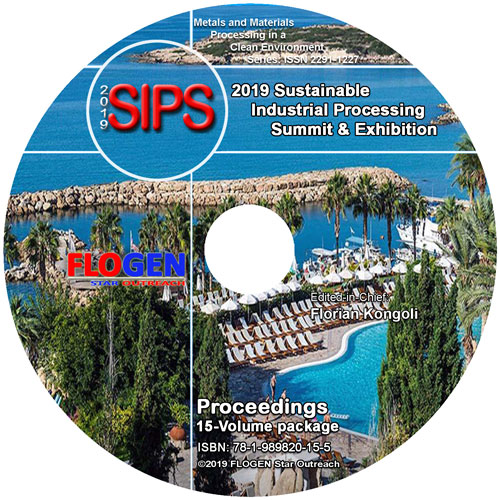2019-Sustainable Industrial Processing Summit
SIPS2019 Volume 8: Usui Intl. Symp. / Advanced Sustainable Iron and Steel Making
| Editors: | F. Kongoli, P. Assis, M.C. Gomez-Marroquin, S. Kitayama, H. Konishi, A. Murao, S. Nomura, H. Ono, H. Saxen, K. Seto, J.I. Tani |
| Publisher: | Flogen Star OUTREACH |
| Publication date: | 20 December 2019 |
| Pages: | 250 pages |
| ISBN: | 978-1-989820-07-0 |
| ISSN: | 2291-1227 (Metals and Materials Processing in a Clean Environment Series) |

CD shopping page
Assessment guidelines for industrial by-products
Juergen Antrekowitsch1;1CHAIR OF NONFERROUS METALLURGY, Leoben, Austria;
Type of Paper: Plenary
Id Paper: 286
Topic: 2
Abstract:
The development of the raw materials supply is characterized by decreasing metal grades and still relatively low recycling rates. While the recycling of metallic scrap is nowadays state of the art, metal-containing by-products from the metallurgical industry represent a new potential secondary resource. Due to the genesis of the primary polymetallic ores, it is especially the metallurgical processes used in the copper, lead and zinc industries that offer a high potential in their by-products. Besides the base metals, also many minor metals declared as critical by the European Union regarding their supply will be recoverable. To allow a better assessment of these materials, a certification system similar to the ones already existing for primary resources needs to be established. Through special characterization of selected residues and the evaluation of possible recycling processes, a generally valid assessment scheme is to be developed. The optimized use of by-products as secondary raw materials helps to preserve valuable primary resources and to minimize landfilling of potentially hazardous wastes. An evaluation system followed by a certification step is beneficial for both continuously produced metallurgical by-products, and landfilled materials from the past. These resources will be opened to recycling step by step, offering new potentials that enlarge the present metal resource base.
A case study for zinc containing residues gives an insight on the ongoing research and development.